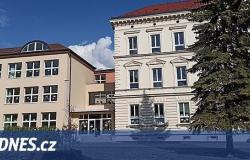This article is a bit of a reaction, but mainly a supplement to my first article about commuting by bike and comparing the Netherlands with the Czech Republic. I am not a professional journalist, but just a writer who wants to enrich readers in a country to which he feels a connection with this blog. However, I would not allow myself to purposefully lie or agitate, either on behalf of cyclists or car drivers. And that is why I would like to expand my original article about cycling in the Czech Republic.
Maastricht and the hills
One discussant mentioned that she lived in Maastricht and never saw any hills there except for one. Admittedly, I don’t live in that city (as mentioned in the original article), but I did some research before publishing the article, and hilltop neighborhoods do exist. Either when driving from the center in the direction of Daalhof or De Heeg. Yes, these are not vertiginous hills. But my article was mainly about nearby villages like Cadier en Keer or Eckelrade. And there is already an elevation of more than 100 meters. My article was about these villages in particular. My inspiration was the Maastricht-Cáchy cycle path, which runs along its entire length. Just imagine a cycle path between Kolín and Kutná Hora, which would run separately along the main drag.
I made a similar mistake in Prague, when I didn’t check that a part of the bike path already existed on Evropska. However, it still runs into a classic Czech problem. These are isolated sections. A cyclist rides for a while, then has to dismount, then can ride again.
What the Czech Republic can learn
I don’t want to claim that Prague should start building a bike path from Palmovka to Bohnice tomorrow. The elevation is not exactly the smallest. However, select a few meaningful sections that end at places that are landmarks and build a bike path, preferably separated from cars and pedestrians.
Photo: The Wandering Dutchman
Separation of the bike path from the road and sidewalk
In the picture above you can see an example, again from the Netherlands. The road is separated from the sidewalk and bike path. And at the same time, the sidewalk itself is raised. Pedestrians are thus protected from cyclists, and cyclists do not have to worry about hitting a pedestrian when they are out of sight. As both the bike path and the sidewalk are still close to the road, light from the street lights falls on it. Thus, the cyclist only needs an ordinary front light to be seen and, if necessary, illuminate his path if he is not in danger.
Another important infrastructure is parking. Both cars and bikes need to build parking spaces. When a new store is built, a parking lot with sufficient capacity will be built together with the store. However, I have not heard that bikes are thought of as strongly. We don’t need to immediately build huge bicycle parking garages like they have in the Netherlands. An ordinary railing is enough for the bike, to which it can be tied. I have seen such an approach in several cities in Germany. Why should people ride a bike when they first have to get it out of the basement at home and don’t even have a place to put it at work? When you drive a car, you often have a reserved parking space at home or at work, just start it and go. Until we move in this supporting infrastructure, bike lanes are not even worth talking about and are just a waste of public funds that would be better used for public transport to make it more reliable.
The mentality of citizens
The original article was headlined “Hills are no problem for urban cycling. The mentality of citizens yes.” I stand behind this headline. If hills are the main argument against building cycling infrastructure, why does the bike sharing company Nextbike boast on its website that it provides its service in 35 cities? And how many of them have only minimal hills? I can only think of Hradec Králové and Pardubice. Prague, Brno, Zlín or Jihlava would not exactly be cities without hills. Why can’t we look for solutions instead of constantly looking for excuses? Bike sharing companies know very well where they put their stations. Couldn’t we help them and build a solid infrastructure between these points? Either meaningful cycle paths or more parking spaces. Let’s cough up some Green Deal or climate sustainability. I ride a bike in the Netherlands for two reasons. This is the fastest way of transportation for me, and I’m also doing something for my health. Czechs have hardly moved in terms of healthy life expectancy over the past 50 years. Regular movement is a well-known prevention against most diseases of civilization. I believe that the investment would return to the Czech Republic. In addition, as one of the discussants wrote, schoolchildren would certainly appreciate the bike. Just as for Dutch children, Czech children would certainly appreciate it if they could transport themselves between home, school and clubs. In addition, we would awaken movement and independence in them. After all, both things are missing in today’s young generation. So why not actively support them? But only on the condition that children would not be socially divided according to the age of the bike, and children with a new bike would not bully children with a worn but still perfectly functional bike.
Tags: Czech Republic learn cycling infrastructure






